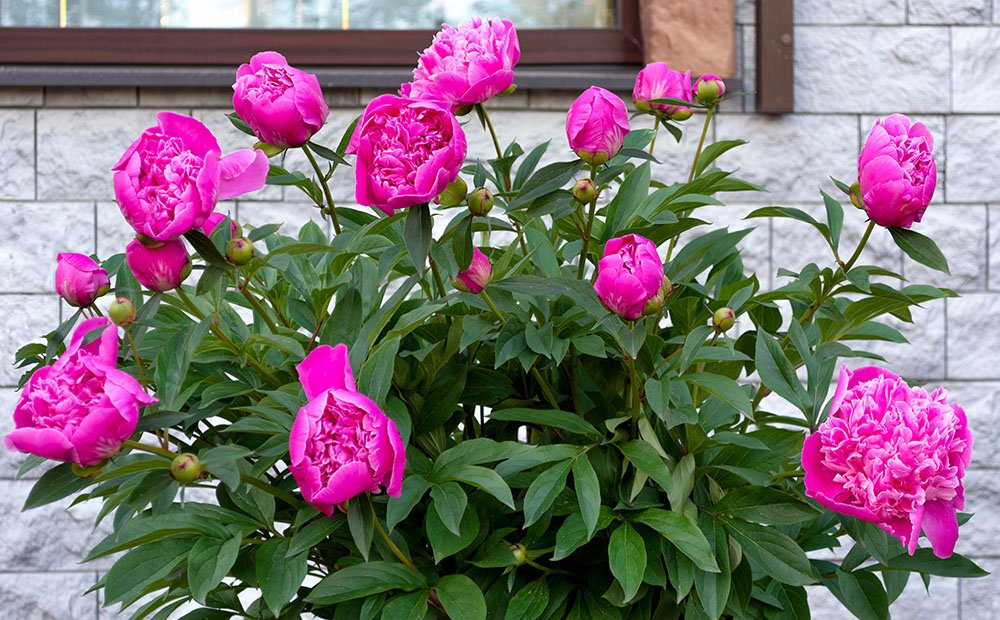HOW TO CARE FOR PEONIES FOR LONGER-LASTING FLOWERS
Peonies are an old-fashioned favorite in the flower garden. Their irresistibly voluminous flowers are so beautiful that you can find their likeness on everything from fine art to printed dresses. Like so many beautiful things, the flowers of this classic perennial are short-lived; fortunately, you can try these peony care tips to enjoy more flowers from your plants and even extend their season a little longer!
Challenges of Growing Peonies
While peony plants aren’t especially difficult to care for, first-time peony gardeners may wonder, “Why isn’t my peony blooming?”
The truth is that most peony cultivars are an exercise in delayed gratification. Since it takes a while for peonies to get well-established and comfortable, they’re not fond of being transplanted and can sometimes only produce a few blooms in their first and second seasons after planting. Choosing an excellent planting location, combined with proper care, is the best way to curb the most common peony pitfalls.
Planting Your Peony
A properly planted peony can thrive in the same location for decades—some can live up to 100 years! Make sure your peony has a shot at celebrating its hundredth birthday with these planting best practices:
Sun and Soil: Peonies thrive best in a protected location with full sun and rich, fertile, well-draining soil, ideally with a neutral pH. You can set your peonies up for success by mixing some compost into your garden soil before planting.
High and Dry: These perennials don’t do well in damp conditions, so avoid planting in low areas of your landscape that tend to collect a lot of rainwater runoff.
Time It Right: Fall is the best time to plant peonies, as the cool weather makes it much easier for the plant to get established. Once planted, water the plant well and keep the soil evenly moist by watering every other day—or more often if a late-season heat wave strikes. By next spring, the plant will only need to be watered every few weeks throughout the growing season.
Basic Peony Care
Peonies aren’t particularly heavy feeders and can manage with just one annual feeding of slow-release fertilizer in late spring. However, in the first few years of your peony’s life, the stems will be very flexible and can buckle under the weight of the massive blooms. Installing a peony ring around your plant will provide the support it needs as it grows.
Extending the Life of Your Peony Flowers
Peony flowers are here for a good time, not a long time. However, you can try a few tricks to get a longer bloom period, so you don’t have to say goodbye quite so soon.
Protect Flowers from Heavy Rain: Peonies have a love/hate relationship with water—they need moisture to survive, but those delicate petals don’t take well to getting wet. Some gardeners will place an umbrella over their peonies before a heavy to protect the flowerheads. If you try this trick, tie the umbrella down with a sock full of stones or some other heavy item to prevent it from blowing away.
Plant Cultivars with Different Bloom Times: Peonies thrive in mass plantings, so choosing multiple cultivars with varying bloom times is a great way to enjoy them longer. When choosing cultivars, check their bloom period (either late spring, early summer, or midsummer) and plant one of each.
Guard Your Peonies Against the Wind: A harsh gust of wind can blow the petals right off your peonies, causing the plant to lose flowers prematurely. Choosing a sunny but protected location to plant, such as the south wall of your home or fence, can help protect your peonies.
Remove Spent Flowers: Once a peony flower looks worn out, it is no longer doing your garden any favors. ‘Deadheading’ old flowers before they start forming seed pods encourages reblooming and keeps the plant looking tidy.
Despite their tendency to take their time before blooming, peony flowers are worth the wait, and they get better every year! There’s no better time to start selecting your favorite cultivars from the peonies for sale at our Indianapolis garden center. While they require a little patience and extra care for their environment early on, before long, you won’t be able to picture your flower garden without them.





